© Copyright – 2010-2023 : All Rights Reserved. Sitemap
Power Distribution Unit PDU, rack mount PDU, PDU data center, Smart PDu, intelligent PDU
Power Distribution Unit PDU, rack mount PDU, PDU data center, Smart PDu, intelligent PDU
DTI-CX 2025 Digital Transformation Indonesia Conference, DATE:6-7 AUG.2025, Booth No.: C21
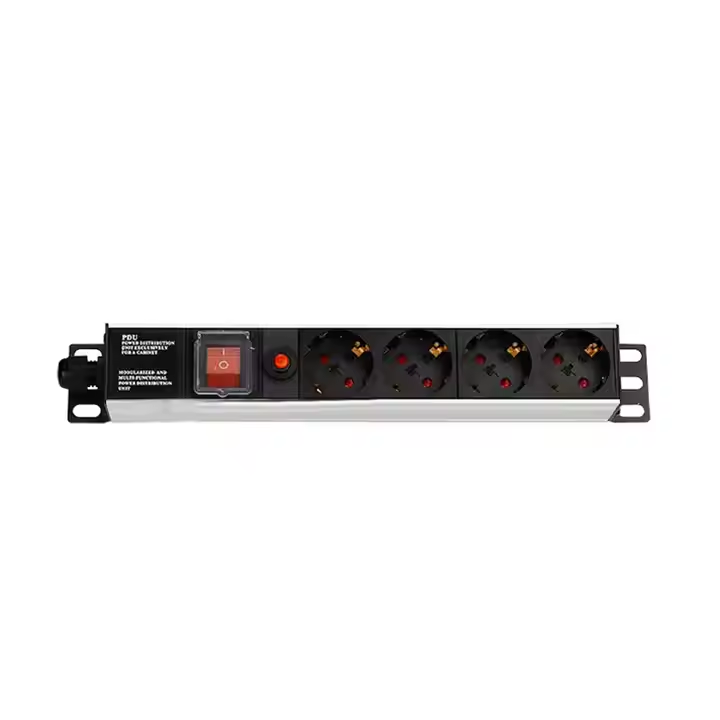
When you choose the right network pdu, you solve real power challenges in your data center. Power-related outages remain the top cause of downtime, with pdu failures accounting for a significant portion.
| Cause of Data Center Outage | Percentage of Impactful Outages |
|---|---|
| Power-related outages (overall) | 54% |
| Network-related outages | 12% |
| Power distribution unit (PDU) failure | 11% of power-related outages |
A reliable pdu improves uptime and gives you remote management options. Intelligent pdu models offer real-time monitoring and help you reduce energy waste. Selecting a network pdu with advanced features ensures your rack pdu keeps your operations running, even as needs change.
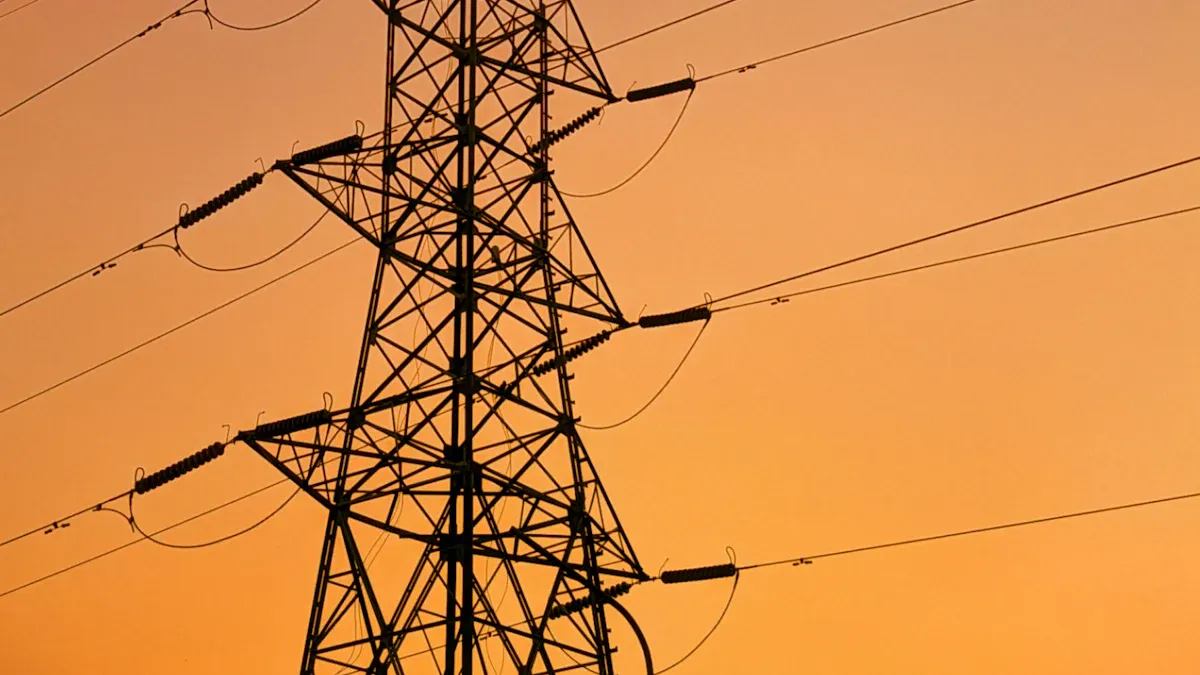
You face real risks when power distribution fails in your network. Long power outages disrupt your operations, threaten safety, and cause financial losses. Many outages last over eight hours and affect most of the US population. Severe weather, aging infrastructure, and technical failures all play a role. The table below highlights the most common power distribution problems and their prevalence:
| Power Distribution Problem | Evidence of Prevalence |
|---|---|
| Frequent power outages lasting 8+ hours | 17,484 such outages (2018–2020), affecting 73.7% of the US population |
| Outages linked to severe weather/climate events | 62.1% of long outages co-occurred with extreme weather |
| Regional prevalence | Highest rates in Northeastern, Southern, and Appalachian counties |
| Increasing trend in outages | 2020 saw record-long outage durations |
| Health and social impacts | Outages cause health risks, food insecurity, and economic losses |
| Non-weather related causes | 40% of long outages due to technical issues |
| Aging infrastructure and rising demand | Contribute to smaller-scale outages |
A network pdu with robust design and quality components helps you avoid these issues. You can reduce risks by choosing a pdu that matches your environment and supports your critical equipment.
You need to manage your power infrastructure from anywhere. Many network administrators struggle with connectivity problems, security concerns, and the complexity of remote management. Poor internet connections, firewall issues, and incompatible hardware often disrupt remote access. Security becomes a challenge as more devices connect from different locations, increasing the risk of cyberattacks.
To solve these problems, you should invest in a pdu that supports remote monitoring and control. This feature lets you check status, control outlets, and receive alerts in real time. Centralized management tools, strong encryption, and multi-factor authentication protect your network. Training your IT team and using reliable remote management platforms also help you respond quickly to issues and keep your systems running.
Tip: Choose a pdu with multi-platform support and clear access policies to simplify remote management and boost security.
You cannot afford downtime in your network. Power failures cause nearly half of all IT outages. A single-source power setup can lead to up to 28 hours of downtime per year. Redundant pdu configurations, such as dual input units with automatic transfer switching, cut downtime to less than two hours annually. These pdus switch power sources in milliseconds, preventing power loss and eliminating single points of failure.
Remote management and monitoring features further improve uptime. They allow you to detect problems early and resolve incidents faster. Studies show that these features can reduce downtime and support times by up to 25%. You avoid costly outages and keep your network running smoothly by choosing a pdu with redundancy and advanced monitoring.
You need to protect your power infrastructure from both internal mistakes and external threats. Modern pdu solutions give you the tools to monitor and secure your network with confidence. When you use a network pdu with advanced monitoring and security features, you gain more control over your environment.
Real-time monitoring lets you track power usage and spot problems before they grow. You can see which devices use the most energy and detect unusual patterns. This helps you respond quickly to issues and avoid downtime. Remote monitoring and control allow you to manage your power systems from anywhere, so you never lose sight of your critical equipment.
Security features in today’s pdu models go beyond simple password protection. You can set up outlet lockout to restrict access to certain outlets. Only authorized staff can make changes, which prevents unauthorized access and power misuse. Advanced access control lets you assign user permissions, so only trusted team members can control sensitive functions.
Here are some key ways monitoring and security features protect your power distribution:
When you choose a pdu with these capabilities, you strengthen your defenses and maintain the integrity of your operations. You can trust your power distribution to support your business, even as risks evolve.
Choosing the right type of PDU is essential for your network’s reliability and efficiency. Each type offers unique features that solve different operational challenges. Understanding these differences helps you select the best solution for your environment.
A basic pdu gives you a straightforward way to distribute power to your equipment. You often see this type in small offices, workshops, or budget-conscious setups. It works well when you need a simple, reliable solution without extra features.
A basic pdu fits best in environments where simplicity and cost savings matter most. If you run a small network or have limited equipment, this option keeps things easy and affordable. However, you should know that a basic pdu cannot provide remote outlet control or detailed power usage insights. In large or complex IT environments, these limitations may restrict your ability to manage power efficiently.
Note: Advanced PDUs offer enhanced durability, space-saving designs, and intelligent management tools. These features justify their higher cost in data centers and high-density racks.
A metered PDU takes your power management a step further. It provides real-time monitoring of power consumption, which helps you make smarter decisions about energy use. You can see exactly how much power your equipment draws at any moment.
A study shows that using metered PDUs can improve energy efficiency by up to 30%. You gain the ability to monitor loads, plan capacity, and prevent circuit overloads. This reduces downtime and extends the life of your equipment. Metered PDUs also help you allocate energy costs accurately, which is important in shared environments.
When you use a metered PDU, you gain more control over your network’s energy use. This leads to lower operational costs and improved reliability.
A switched PDU gives you remote control over each outlet. You can turn devices on or off, reboot equipment, and manage power from anywhere. This feature is especially valuable in large or distributed networks.
| Remote Switching Capability | Description | Benefit to Network Management |
|---|---|---|
| Remote On/Off and Reboot Control | Power on/off or reboot outlets remotely | Reduces downtime and eliminates site visits |
| Real-time Power Consumption | Tracks usage at device or outlet level | Enables proactive intervention and better capacity planning |
| Automatic Power Protocols | Triggers automatic reboot or cycling | Maintains network functionality and reduces disruptions |
| Secure Web Interface | Provides encrypted remote access | Protects against unauthorized access |
| Scalability via Daisy-Chaining | Links multiple units for expanded control | Supports network growth efficiently |
| Environmental Monitoring | Monitors temperature and other conditions | Prevents equipment damage and extends lifespan |
| Integration with DCIM Software | Centralized management and alerts | Streamlines monitoring and improves operational efficiency |
With a switched PDU, you can respond quickly to power issues. You avoid unnecessary downtime and improve network reliability. Features like outlet-level metering and delayed power sequencing help you manage energy use and protect your equipment. Integration with management software allows you to monitor and control multiple units from a single dashboard.
Tip: Switched PDUs are ideal for environments where remote management, fast response, and operational safety are top priorities.
You should consider your network’s size, complexity, and management needs when choosing between a basic pdu, metered PDU, or switched PDU. The right choice ensures your network pdu delivers the performance and control your operations demand.
A smart pdu transforms how you manage power in your network or data center. You gain real-time visibility into every aspect of your power distribution. With a smart pdu, you can monitor voltage, current, and power consumption instantly. Local displays show you live data, while remote access lets you check and control your system from anywhere.
You can use a smart pdu to track energy use at the outlet level. This means you see exactly which devices draw the most power. You can set alerts for overloads and prevent problems before they happen. If a server stops responding, you can reboot it remotely. You can also schedule power cycles to optimize energy use and reduce waste.
A smart pdu gives you more than just power control. Integrated environmental sensors track temperature, humidity, and airflow. If conditions move outside safe ranges, you get automated alerts. This helps you protect your equipment from overheating or moisture damage. You can respond quickly and keep your network safe.
You can connect a smart pdu to your data center management tools. This integration gives you centralized control and advanced reporting. You can use web interfaces, SNMP, SSH, or REST APIs to manage your system. These features help you make data-driven decisions and improve efficiency.
Security is a top priority with a smart pdu. You can set user permissions and use strong encryption to protect your network. Only authorized staff can make changes, which reduces the risk of mistakes or attacks.
Here are some key benefits you get with a smart pdu:
An intelligent pdu stands out in environments where uptime and scalability matter most. You can troubleshoot issues quickly without being on-site. Automated alerts help you prevent problems before they impact your business. You get stable, efficient power distribution that supports your growth.
Tip: Choose a smart pdu if you need detailed monitoring, remote management, and strong security in your network or data center.
A modular pdu gives you unmatched flexibility and scalability. You can add or remove modules as your needs change. This means you can expand your power distribution without replacing your entire rack setup. You save time and money by scaling only when you need to.
You can customize a modular pdu to match your equipment. You select the right number and type of outlets for each rack. This tailored approach ensures every device gets the power it needs. You avoid waste and improve energy efficiency.
Hot-swappable modules let you perform maintenance or upgrades without shutting down your network. You keep your operations running while making changes. This feature is vital for data centers that require continuous uptime.
A modular pdu also includes integrated monitoring. You can track real-time power usage and balance loads across your racks. This visibility helps you plan capacity and troubleshoot issues quickly. You avoid overloading circuits and extend the life of your equipment.
Here is how a modular pdu supports your data center:
You can align your power infrastructure with your business growth. A modular pdu lets you scale at your own pace, optimizing both capital and operational costs. You get clean, reliable power with the flexibility to adapt to any challenge.
Note: Modular pdus are ideal for fast-growing environments where flexibility, uptime, and efficiency are top priorities.
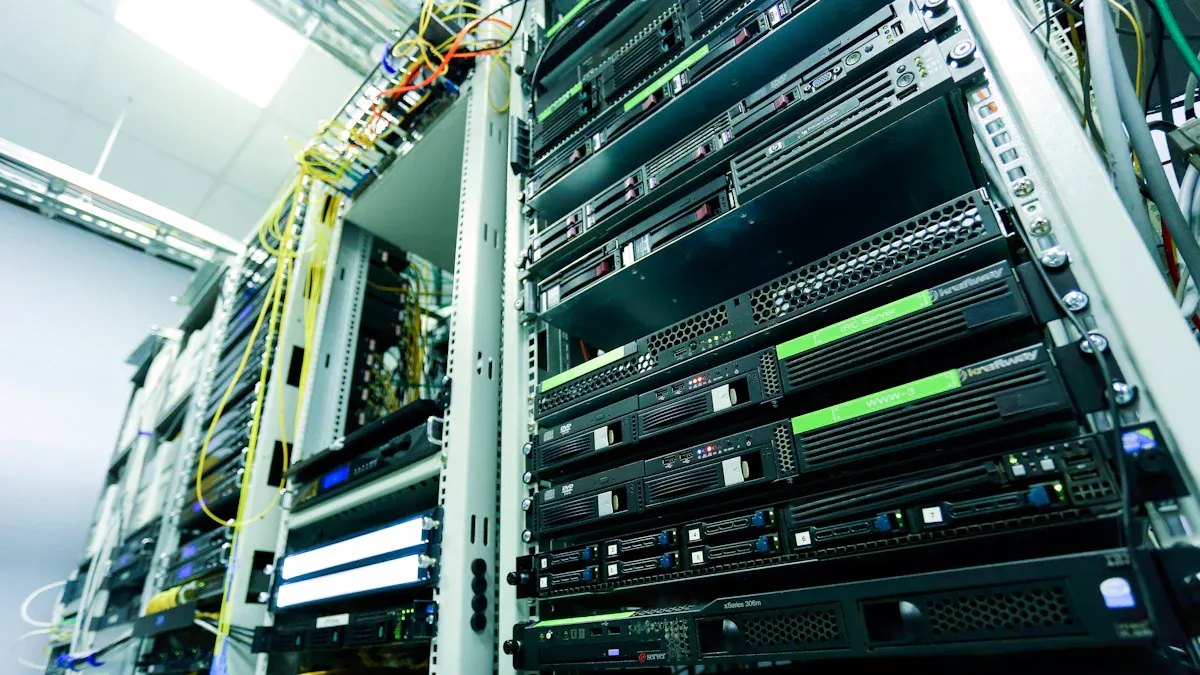
You need to manage your power infrastructure from anywhere, especially when your network spans multiple locations or includes unmanned edge sites. Modern rack pdu solutions give you secure remote access, allowing you to monitor and control power distribution without being physically present. This feature saves time and reduces the need for on-site visits.
Most advanced pdu models support a range of remote management protocols. These protocols enable you to integrate your pdu with network management and DCIM software. You can use encrypted communication channels to protect your data and prevent unauthorized access. The table below shows the most common protocols and security features you will find in today’s rack pdu products:
| Feature Category | Supported Protocols / Security Features |
|---|---|
| Remote Management Protocols | HTTP(S), SSH, SNMP |
| Security Features | Configurable Firewall, Strong Passwords, User Authentication |
| Additional Security | Access Control, Outlet Lockout |
| Connectivity Options | Gigabit Ethernet, Dual Ethernet, WiFi (via USB) |
You benefit from strong security measures such as user authentication, access control, and outlet lockout. These features help you protect your critical infrastructure from tampering or unauthorized use. With remote monitoring and control, you can check status, switch outlets, and receive alerts in real time. This level of access ensures you maintain uptime and quickly respond to any issues.
Tip: Always configure strong passwords and enable user authentication to keep your rack pdu secure during remote access.
Environmental monitoring is a key feature in any smart pdu. You need to keep your equipment safe from temperature spikes, humidity changes, and airflow problems. Integrated sensors in your pdu track these conditions in real time, giving you instant alerts if something goes wrong.
When you use a rack pdu with environmental monitoring, you extend the life of your hardware and reduce maintenance costs. Sensors trigger alerts when conditions move outside safe ranges, so you can act fast to prevent damage. You also optimize your cooling systems, which saves energy and supports energy management and optimization. Data centers that use these features report fewer failures and less downtime.
Note: Managed pdus with environmental monitoring can cut maintenance costs by up to 30% by catching problems early.
Outlet-level control gives you precise command over every device in your rack. You can monitor power use at each outlet, identify high-energy devices, and spot overload risks before they become problems. This feature is essential for energy management and optimization in modern networks.
Outlet-level control supports preventive maintenance and reduces the risk of outages. You can reboot devices remotely, shut down unused equipment, and optimize your energy use. This level of control is especially valuable in high-density racks and large data centers where every watt counts.
Callout: Use outlet-level control to improve troubleshooting efficiency and keep your network running smoothly.
Redundancy in your rack power setup keeps your business running, even when something goes wrong. You protect your network from unexpected power failures by using redundant features in your pdu. These features ensure that your equipment always receives power, which is critical for data centers and other mission-critical environments.
You can achieve redundancy through several key methods:
These features work together to provide a continuous power supply. You keep your operations stable and support business continuity, even during unexpected events. When you choose a pdu with strong redundancy features, you gain peace of mind and protect your investment.
Tip: Always test your redundancy setup regularly to make sure it works when you need it most.
Your network grows over time, and your power distribution must keep up. Scalability in modern rack pdus gives you the flexibility to expand without major disruptions. You can add new equipment, increase capacity, and adapt to changing needs with ease.
Many pdus use a modular design. This allows you to expand capacity by adding modules, so you do not need to replace your entire system. Plug-and-play architecture makes it simple to add or swap components as your network evolves. You can keep your operations running while making upgrades.
Intelligent pdus offer remote management and real-time monitoring. You can track energy use, balance loads, and make adjustments from anywhere. This level of control prepares your network for future growth and helps you avoid costly downtime.
Three phase power distribution is another way to boost scalability. It provides higher power density and better load balancing than single phase units. You reduce cabling complexity and support more devices in a smaller space. This is especially useful in high-density data centers.
Here are some ways scalable pdus support your growing network:
Hot-swappable components and support for multiple input voltages make pdus even more adaptable. You can manage changes without shutting down your network. This flexibility helps you meet new demands and stay ahead of growth.
Note: Choose a scalable pdu to future-proof your network and support long-term success.
You want a simple and reliable power solution for your small business network. Most small server rooms do not need advanced remote management or complex monitoring. Basic PDUs work well in these environments because they offer cost-effective power distribution and easy installation. You can choose models with surge protection and locking outlets to prevent accidental unplugging. If you want to track power use locally, metered PDUs provide a display for real-time consumption data. Some models allow you to upgrade later if your needs change.
Tip: Start with a basic PDU and consider metered options if you need more insight into your power usage.
You manage a large data center and need high availability, advanced monitoring, and remote control. Enterprise environments often use switched or intelligent PDUs to meet these demands. These units support remote outlet control, real-time monitoring, and detailed analytics. You can optimize energy use, prevent overloads, and respond quickly to issues. The table below shows how different PDU types fit enterprise needs:
| PDU Type | Key Features | Typical Use Case |
|---|---|---|
| Basic Rack-Mounted | Simple power distribution | Cost-sensitive or small data centers |
| Metered Rack-Mounted | Real-time usage monitoring | Energy efficiency and basic monitoring |
| Switched Rack-Mounted | Remote on/off per outlet, load balancing | High-availability, remote management |
| Intelligent PDUs | Advanced sensors, analytics, remote management | Complex, large-scale enterprise data centers |
You can select the right PDU by considering your monitoring, control, and scalability needs.
You face unique challenges at edge sites, such as limited space and no on-site IT staff. Intelligent rack PDUs solve these problems with remote management, built-in sensors, and flexible outlet options. You can monitor power loads, reboot devices remotely, and receive alerts for temperature or humidity changes. Some PDUs offer up to 48 outlets and support high power capacity, making them ideal for dense edge deployments. Customizable features, such as cord length and chassis color, help you fit any environment.
Note: Choose an intelligent PDU for edge deployments to ensure reliable, efficient, and scalable power management.
High-density racks present unique challenges for power distribution in modern data centers. You must deliver large amounts of power safely and efficiently to support advanced computing, AI workloads, and dense server configurations. As rack power density increases, you need to select the right PDU features and capacity to keep your equipment running reliably.
| Rack Power Density | Number of 63A PDUs Required | PDU Form Factor and Features | Additional Considerations |
|---|---|---|---|
| Up to 35kW | 1x 63A PDU | Standard single or double-wide PDU | Standard air-cooled design sufficient |
| 50kW | 2x 63A PDUs | Double-wide PDUs to support outlet density | Multiple PDUs and circuit breakers needed |
| 80kW | 3x 63A PDUs | Double-wide PDUs, multiple units per rack | Requires bustle kits for cabling management |
| 100kW | 4x 63A PDUs | Double-wide PDUs, custom solutions may be needed beyond this | Thermal considerations require larger jacket sizes on power cords; safety warnings for high temperatures |
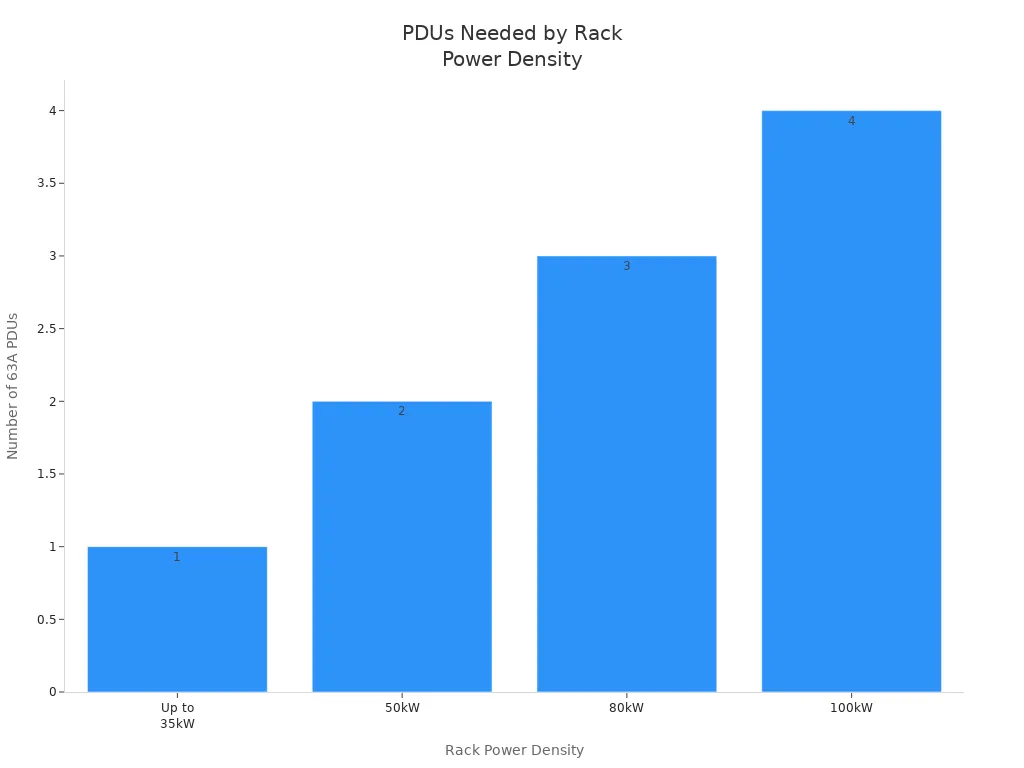
You need to consider several factors when choosing a PDU for high-density racks:
Managed PDUs play a critical role in these environments. They give you real-time visibility, remote management, and alerting to prevent overloads and downtime. You can optimize energy use, respond quickly to issues, and maintain safe operation even as your power demands grow. These features help you support the most demanding IT workloads with confidence.
Tip: Always plan for thermal management and cable organization when deploying high-density racks. This ensures safe operation and makes maintenance easier.
You want a PDU that delivers reliability, advanced features, and strong support. Leading brands stand out for their innovation, certifications, and user satisfaction. The table below compares top network PDU brands and highlights their strengths:
| Brand & Model | Key Reliability & Feature Highlights | Certifications & User Ratings |
|---|---|---|
| Vertiv Group Corporation | Modular, scalable designs for high-density data centers; supports rapid growth | Strong global reputation |
| Legrand | Wide range of PDUs focusing on energy efficiency and sustainability | Eco-conscious appeal |
| APC by Schneider Electric | Decades of reliable power management; advanced monitoring and robust safety features | UL/CE certified; user rating ~4.7/5 |
| Eaton Corporation | Energy-efficient PDUs with management tools; sustainability focus | High user rating 4.8/5; IP67 protection |
| Raritan Inc. & Server Technology | Intelligent PDUs with remote management and environmental sensors | Recognized for uptime optimization |
| CyberPower, Tripp Lite, HPE | Strong customer support and global availability | User ratings ~4.6/5 |
| Panduit, Cisco, Delta, ABB, Siemens, Geist, Enlogic | Investment in R&D, digital transformation, AI, IoT integration | Innovation leaders |
| NBYOSUN | Advanced features: real-time monitoring, remote management, energy efficiency, flexible customization | ISO9001, UL, CE certified; user rating 4.7/5; 15% energy reduction, 20% uptime improvement |
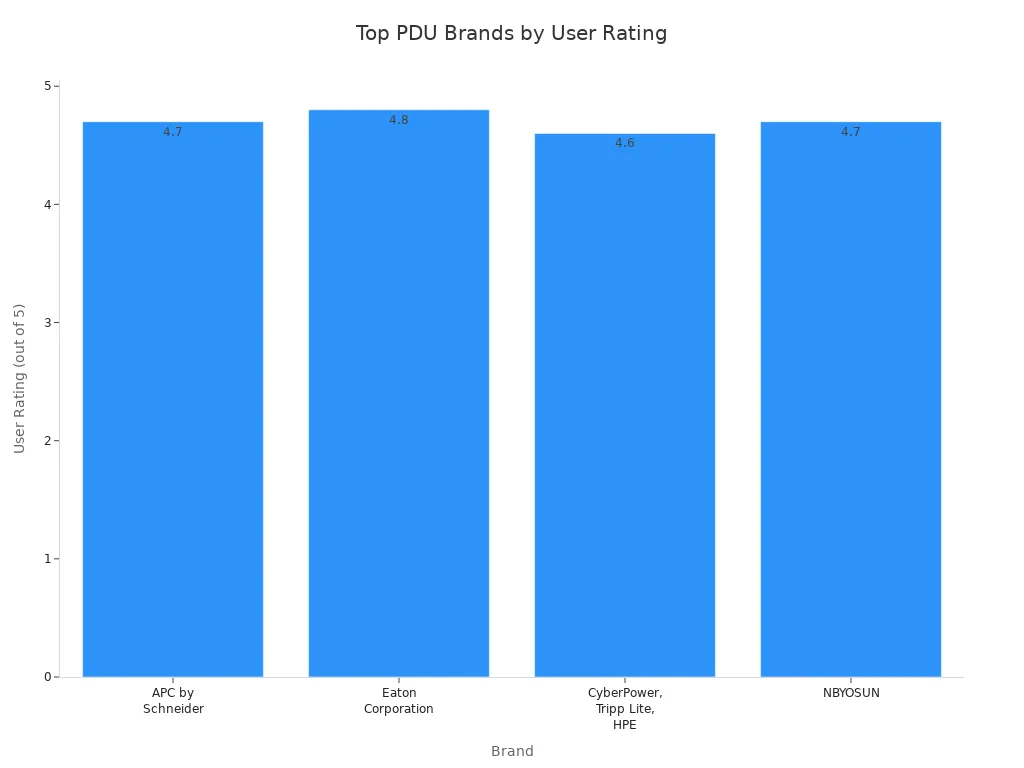
You see that NBYOSUN matches or exceeds the feature set and reliability of established brands, with strong certifications and measurable improvements in energy savings and uptime.
When you compare top network PDUs, you notice important differences in features and performance. The table below summarizes the main advantages and disadvantages:
| Consideration | Advantages | Disadvantages |
|---|---|---|
| Remote Monitoring | Outlet-level control, environmental sensors, integration with DCIM/BMS, real-time alerts, improved uptime | Higher cost and increased operational complexity |
| Build Quality & Certification | Certified (ISO9001, UL, CE), robust materials, flame-retardant, durable construction | N/A |
| Energy Efficiency | Real-time energy consumption monitoring, up to 20-30% reduction in energy waste, cooling cost reduction | N/A |
| Ease of Use | Rotatable LCD, outlet grips, switchless design, remote control capabilities | Requires skilled personnel and training |
| Scalability | Cascading support for multiple units, customizable configurations | Compatibility challenges with legacy systems |
| Security | Network connectivity enables remote management | Exposure to cybersecurity risks, requires strong security measures |
| Compatibility | Supports standard protocols (SNMP, HTTP), customizable outlet and plug types | Integration issues with older infrastructure, may need adapters or software modifications |
| Customer Support | Strong technical assistance and training | N/A |
Note: You should always consider your infrastructure, security needs, and available technical resources when selecting a PDU.
You can see the impact of NBYOSUN PDUs in real-world deployments:
Callout: NBYOSUN PDUs deliver measurable benefits across industries, including energy savings, improved uptime, and enhanced operational control.
Selecting the right network PDU boosts your operational reliability and keeps your systems running. The table below shows how advanced PDU features support uptime and efficiency:
| Feature | Benefit for Reliability and Uptime |
|---|---|
| Real-time Monitoring | Early issue detection, less downtime |
| Remote Reboot | Faster response, reduced outages |
| Surge Protection | Fewer failures, longer equipment life |
| Locking Outlets | Prevents accidental disconnections |
Before you decide, use this checklist to match your PDU to your needs:
Investing in the right PDU gives you greater uptime, efficiency, and control in your network or data center.
A basic PDU distributes power without monitoring or control features. A smart PDU gives you real-time monitoring, remote management, and advanced security. You gain more control and insight with a smart PDU.
You should consider your power needs, monitoring requirements, and future growth. Look for features like remote access, outlet-level control, and scalability. Always check certifications and compatibility with your equipment.
Yes, many intelligent PDUs include sensors for temperature, humidity, and airflow. You receive alerts if conditions change. This helps you protect your equipment and prevent downtime.
Redundancy ensures your equipment keeps running if one power source fails. You avoid unexpected downtime and protect your data. Dual inputs and automatic transfer switching provide continuous power.
Key Reasons Why Auto Transfer Switch PDUs Are Vital
Important Advantages Of Auto Transfer Switch PDUs Explained
A Professional And Leading Manufacturer
For OEM
& ODM Power Distribution Unit (PDU)
You Can Trust
CONTACT
Ningbo YOSUN Electric Technology Co., LTD
Leading Professional Manufacturer in PDU Power Solutions
Contact Info.